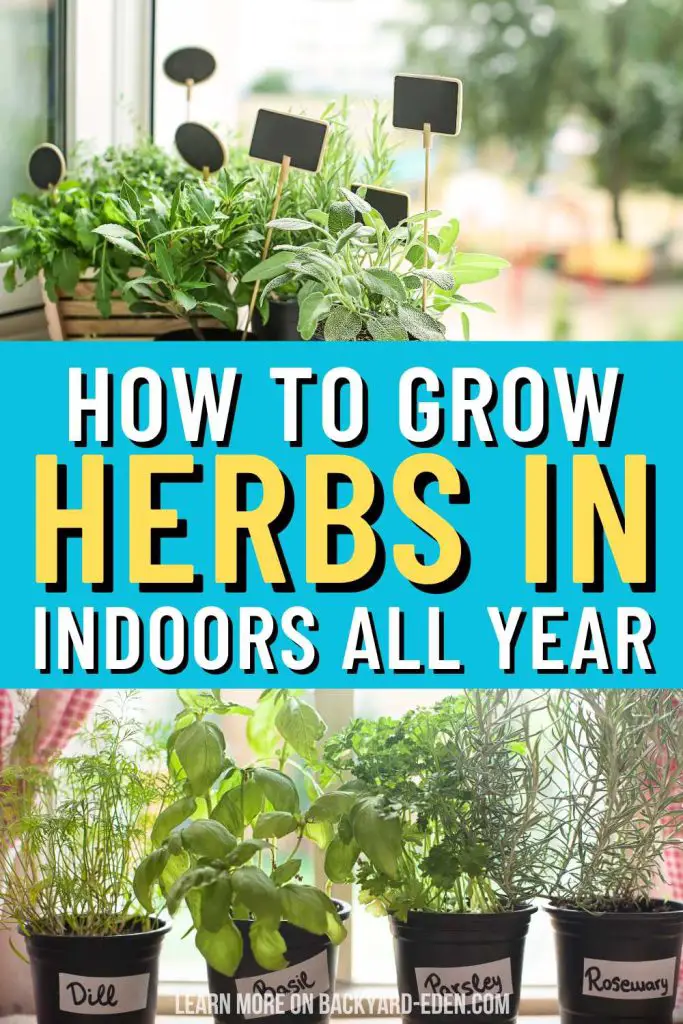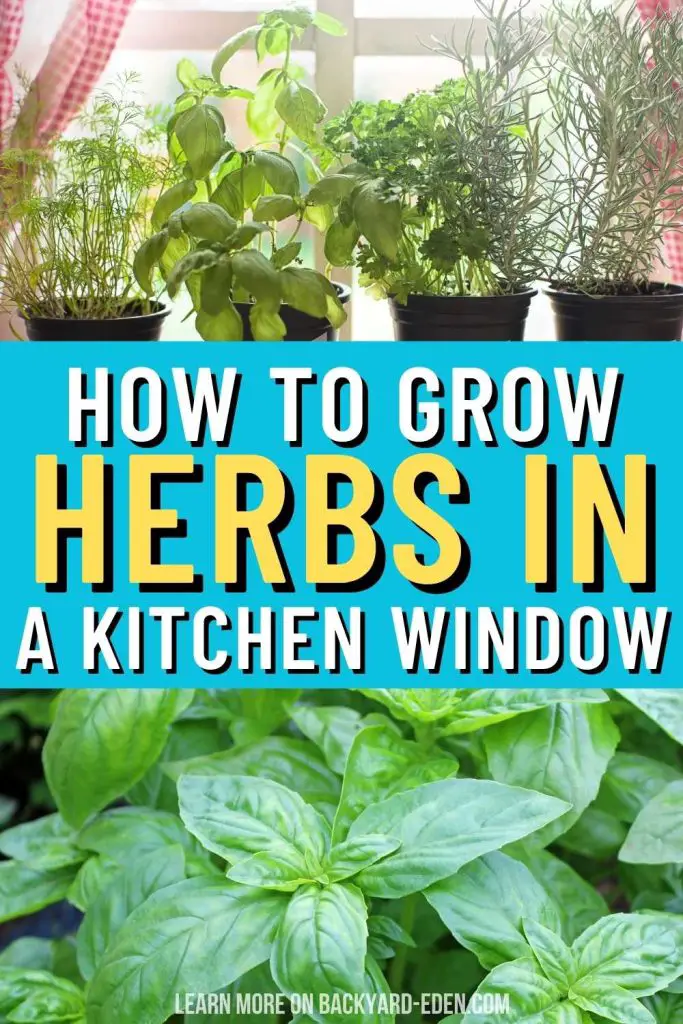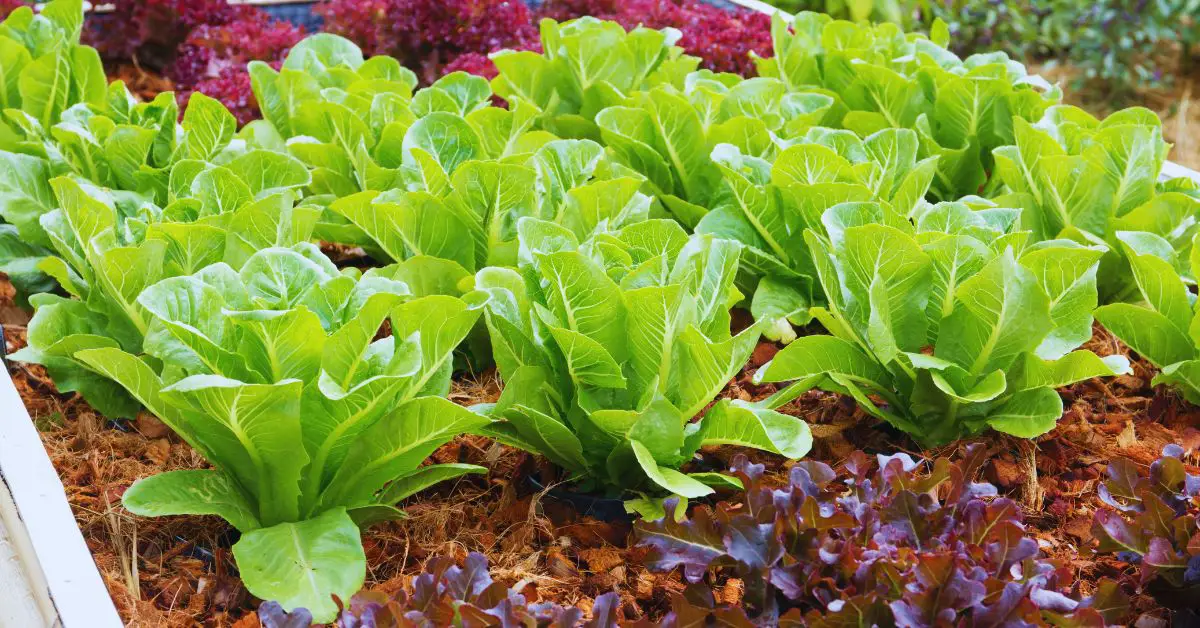Today, we’re venturing into the delightful world of growing herbs indoors. Whether you live in an apartment with just a smidge of sunlight or you simply want to keep your greens close at hand in the kitchen, indoor herb gardening is for you.
Fresh herbs can transform your cooking, adding vibrant flavors right from your windowsill. Imagine snipping off some fresh basil for your pasta or garnishing your soup with sprigs of parsley that you grew yourself. Not only do these herbs elevate your dishes, but they also bring a burst of green life to your indoor spaces.
Growing herbs indoors isn’t just about culinary delights; it’s also incredibly practical. It allows you to have fresh herbs all year round, regardless of the weather outside. Plus, it’s a perfect solution for those with limited outdoor space.
So, if you’re ready to start your journey towards having a lush, aromatic herb garden inside your home, stick around. This guide will walk you through everything from choosing the right herbs to proper care and troubleshooting.
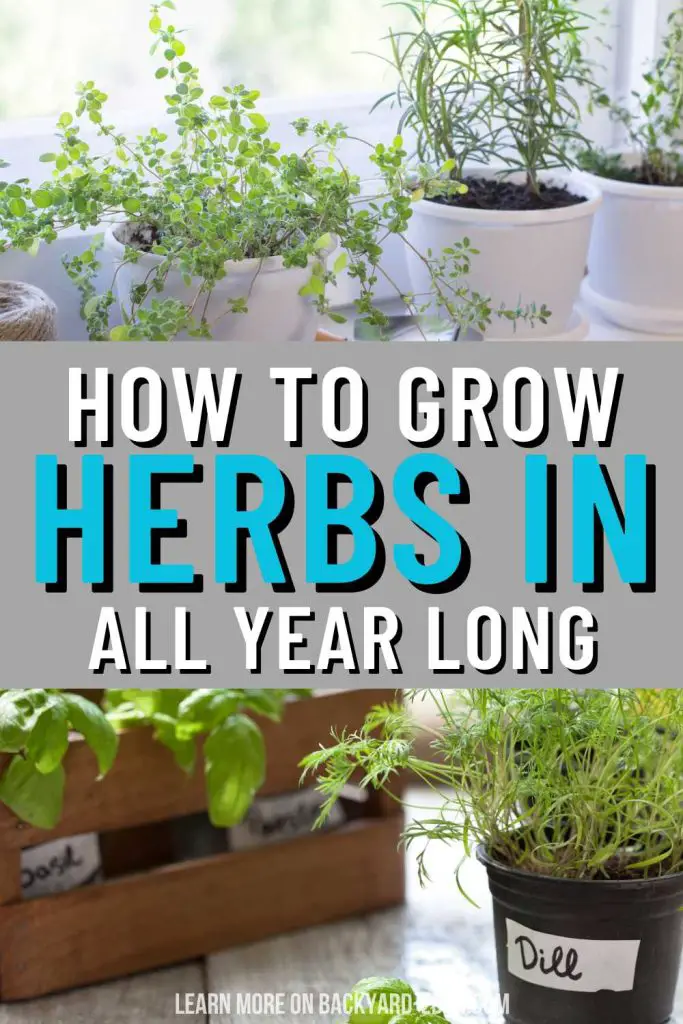
This post may contain affiliate links. Read our full disclosure here.
Choosing the Right Herbs
When you decide to start an indoor herb garden, the first step is selecting the right herbs. Some herbs are more suited to indoor conditions than others, making them ideal choices for your windowsill or indoor plant shelves.
Popular Indoor Herbs
Some of the best herbs to grow indoors include:
- Basil: Known for its lush leaves and aromatic presence, basil thrives in warm environments with plenty of light.
- Parsley: This hardy herb doesn’t need as much sunlight as others, making it a versatile choice for less sunny spots.
- Mint: Incredibly vigorous, mint can grow in a variety of conditions, but be aware—it can spread quickly, so it’s best kept in its own pot.
- Thyme: With its preference for drier conditions, thyme is a great option for indoor gardens as it doesn’t require constant moisture.
- Chives: Requiring minimal space and maintenance, chives can do well in smaller pots and still produce a hearty yield.
Choosing Varieties: When selecting herbs for indoor growing, look for varieties that can adapt to less direct sunlight or those that are compact in form. Many herbs are available in dwarf varieties, which are ideal for confined spaces.
Consider Your Cooking Needs: Think about the herbs you most commonly use in your cooking. Growing herbs that you enjoy and use often can be more rewarding and practical. Whether you’re enhancing your favorite dishes or experimenting with new recipes, having your own supply of fresh herbs can inspire and elevate your culinary efforts.
By carefully selecting the right herbs for your indoor conditions and culinary preferences, you can set up a thriving indoor herb garden that is both beautiful and functional.
Setting Up Your Indoor Herb Garden
Once you’ve selected which herbs to grow, setting up your indoor herb garden is the next exciting step. Here’s how to create the optimal environment for your herbs to flourish:
Choosing the Right Containers
Start with the right pots. Each herb should be planted in a container that has adequate drainage holes to prevent waterlogging, which can lead to root rot. Terracotta pots are great for herbs because they allow roots to breathe and help manage soil moisture.
Selecting the Soil
Use a high-quality potting mix designed for containers. These mixes are formulated to provide excellent drainage and the right nutrient balance for potted plants. Avoid using garden soil, as it can be too dense and may contain pests and weeds.
Proper Drainage
Ensure your containers have good drainage. Place a layer of gravel or small stones at the bottom of each pot before adding soil. This layer helps water flow through the soil, keeping roots healthy.
Positioning Your Herbs
Place your pots in a location where they will receive plenty of light. Most herbs require about 6 to 8 hours of sunlight daily. A south-facing window is often ideal, but if natural light is limited, consider using an LED grow light to supplement.
Grouping Your Herbs
Group herbs with similar watering needs together to simplify care. For example, Mediterranean herbs like rosemary, thyme, and oregano prefer drier soil, while basil and parsley like more moisture.
Setting up your indoor herb garden with the right conditions and care not only ensures your herbs will grow well but also makes maintaining your garden easier. With your containers ready and placed in the perfect spot, you’re well on your way to enjoying fresh, flavorful herbs any time you need them.
Lighting Needs for Indoor Herbs
Proper lighting is crucial for the growth and health of indoor herbs. Here’s how to ensure your herbs get the light they need to thrive:
Understanding Light Requirements: Most herbs require about 6 to 8 hours of direct sunlight per day. Without sufficient light, herbs can become leggy—tall and spindly with weak stems.
Choosing the Best Location: A south-facing window is typically the best spot for indoor herbs because it receives the most sunlight throughout the day. East or west-facing windows can also work, but the light may be less intense. North-facing windows usually do not provide enough light for most herbs.
Supplementing with Grow Lights: If you don’t have a spot that gets enough natural sunlight, grow lights are an excellent alternative. LED grow lights are energy-efficient and provide the broad spectrum of light that herbs need to photosynthesize. Position the lights about 12 to 18 inches above the plants and set them on a timer to ensure your herbs get consistent daily light.
Adjusting Light Seasonally: Be aware that the intensity and duration of sunlight can change with the seasons. You may need to move your herbs closer to the window or adjust your grow lights during the winter months when daylight hours are shorter.
Monitoring Your Plants: Keep an eye on your herbs for signs of inadequate light, such as stretching toward the light source or pale leaves. These signs indicate that you may need to adjust their position relative to the light source.
Providing the right amount of light is key to growing healthy, vigorous herbs indoors. By optimizing the natural light available and supplementing with grow lights when necessary, you can maintain a lush and productive indoor herb garden year-round.
Watering and Feeding Your Herbs
Proper watering and nutrition are essential for maintaining healthy indoor herbs. Here’s how to get it right:
Watering Your Herbs: Herbs prefer to be watered when the top inch of soil feels dry to the touch. Stick your finger into the soil to check moisture levels before watering. It’s important to water thoroughly so that moisture reaches the entire root system, but be sure to allow excess water to drain away to prevent root rot.
Frequency of Watering: The frequency of watering will depend on several factors, including the type of herb, the size of the container, the type of soil, and the humidity and temperature of your home. Generally, herbs like basil may need water more frequently, while herbs like thyme and rosemary, which prefer drier conditions, need less frequent watering.
Feeding Your Herbs: Most herbs aren’t heavy feeders, but applying a balanced, water-soluble fertilizer every 4 to 6 weeks during the growing season can help promote healthy growth. Be cautious not to over-fertilize, as this can lead to weak growth and poor flavor. Using organic fertilizers can also provide a slow release of nutrients in a more gentle manner that is ideal for indoor herbs.
Signs of Overwatering and Underwatering: Overwatering is a common issue with indoor herbs and can lead to fungal diseases and root rot. Signs of overwatering include yellowing leaves and a general lack of vigor. Underwatering, on the other hand, will cause the plants to wilt and the leaves to dry out and become brittle.
Adjusting Care Based on Observation: Keep an eye on your herbs and adjust your watering and feeding schedule based on how they look and grow. Healthy herbs should look vibrant and vigorous. Any discoloration or distortion in the leaves often signals a problem with watering or nutrition.
By providing your herbs with the right amount of water and nutrients, you can ensure they remain healthy and productive. This care will allow you to enjoy a continuous supply of fresh herbs for cooking, making the little extra effort well worth it.
Pruning and Harvesting
Pruning and harvesting are essential practices that keep your indoor herbs healthy and productive. Here’s how to effectively manage these tasks:
Pruning for Growth: Regular pruning is vital for encouraging bushier and more robust growth in herbs. When you prune, focus on removing any dead or dying leaves to prevent disease and promote air circulation. Additionally, pinch back the tops of the herbs, which encourages them to grow sideways and become fuller rather than just shooting up vertically.
How to Prune: Use clean, sharp scissors or pruning shears to make clean cuts. This helps prevent damage to the stems. Make your cuts just above a leaf node (where the leaves grow out of the stem), as new growth will sprout from these points.
Harvesting Your Herbs: The best time to harvest most herbs is just before they flower, as this is when their flavor is most potent. To harvest, snip off around one-third of the branches when the plant reaches at least 6 inches tall. This method ensures that the plant remains healthy and has enough energy to regrow.
Regular Harvesting: Regular harvesting not only provides you with fresh herbs for your kitchen but also stimulates the plant to produce new growth. Make it a routine to harvest little and often, which can help keep your plants thriving.
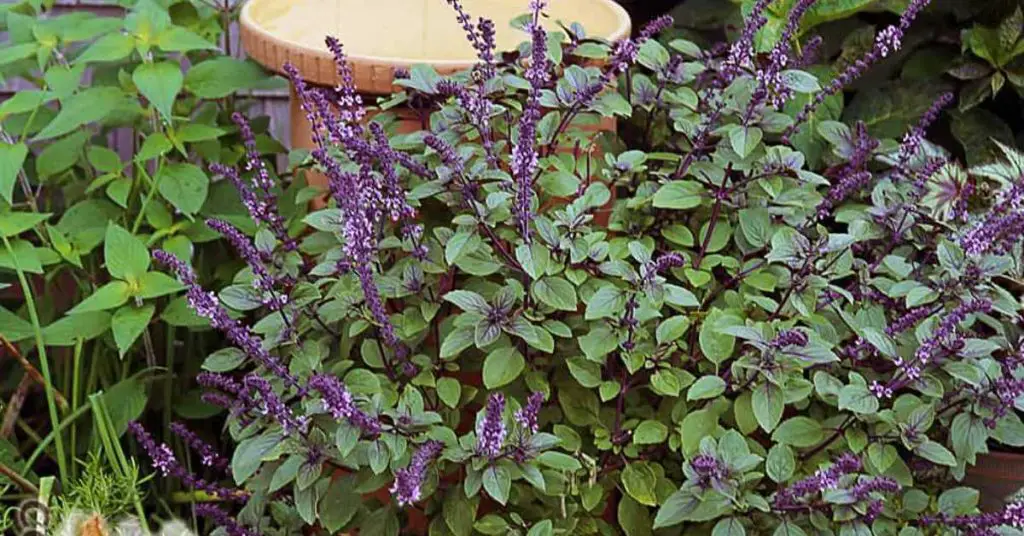
Harvesting Tips: When harvesting, choose the outer and older leaves first, as this helps the younger leaves in the center get more light and air, encouraging growth. Also, morning is the best time for harvesting, as the herbs are full of aromatic oils after a cool night.
Pruning and harvesting not only keep your indoor herbs healthy but also ensure that you have a continuous supply of fresh flavors for your cooking. With regular care, your herb garden can become a focal point of your home and a constant source of culinary inspiration.
Common Problems and Solutions
Growing herbs indoors can sometimes present challenges, including pests, diseases, and environmental stresses. Here’s how to identify and resolve common issues to keep your indoor herb garden healthy:
Pests: Indoor herbs can attract pests like aphids, spider mites, and whiteflies. These pests typically appear on the undersides of leaves or at the stem joints. To combat them, you can use a mild soap solution or neem oil spray to gently clean the affected areas. Be proactive by checking your plants regularly for any signs of pests.
Diseases: Common diseases that affect indoor herbs include powdery mildew and root rot. Powdery mildew appears as a white, powdery coating on leaves, while root rot affects the roots due to overwatering and poor drainage. To prevent diseases, ensure good air circulation around your plants and adjust your watering habits to avoid leaving soil waterlogged.
Environmental Stresses: Herbs can show stress if the environmental conditions aren’t ideal. Symptoms like yellowing leaves or stunted growth often result from poor lighting, incorrect watering, or nutrient imbalances. To address these issues:
- Light: Make sure your herbs receive sufficient light, either from a natural source or supplemental grow lights.
- Water: Adjust your watering schedule based on the dryness of the soil and the specific needs of each herb.
- Nutrition: Feed your herbs with a suitable fertilizer, but be careful not to overdo it, as excess nutrients can harm plant health.
Troubleshooting Leaf Discoloration: If the leaves of your herbs are turning yellow or brown, assess both your watering technique and the light they receive. Overwatering, poor drainage, and insufficient light are common causes. Adjusting these elements often resolves the issue.
By staying vigilant and responding quickly to any signs of distress in your herbs, you can effectively manage common problems and ensure your indoor herb garden remains a vibrant and productive part of your home.
Frequently Asked Questions
How Much Light Do Indoor Herbs Need Daily?
Indoor herbs typically need about 6 to 8 hours of direct sunlight per day to thrive. If natural light is limited in your home, consider using grow lights to supplement. LED grow lights are effective and energy-efficient, and they can be positioned directly above your herbs to ensure they receive sufficient light throughout the day.
Can I Grow Herbs Indoors in Winter?
Absolutely! Growing herbs indoors is a great way to have fresh greens year-round, including during the winter. Since natural light can be limited in the winter months, you may need to rely more on supplemental lighting, such as grow lights, to provide your herbs with the necessary energy to grow.
What Are the Easiest Herbs to Grow Indoors?
Some of the easiest herbs to grow indoors include basil, mint, chives, parsley, and thyme. These herbs are generally resilient and don’t require as much direct sunlight as some other varieties. They are also versatile in various culinary uses, making them great choices for beginner gardeners.
How Do I Know If My Herbs Are Getting Too Much Water?
Signs that your herbs are getting too much water include yellowing leaves, a general appearance of wilting or droopiness, and mold or algae growth on the soil surface. If you notice these symptoms, reduce your watering frequency and make sure your pots have good drainage to prevent excess moisture.
What Should I Do If My Indoor Herbs Start to Look Sick?
If your herbs start to look sick, assess the symptoms to determine possible causes. Common issues include insufficient light, overwatering, or pest infestations. Adjust the light exposure, modify your watering schedule, or treat pests with natural remedies. If the problem persists, consult with a local garden center or search for specific symptoms and solutions online to get targeted advice for your plants’ conditions.
Conclusion
By following the guidelines we’ve discussed—from selecting the right herbs and setting up your garden to proper care and troubleshooting—you’re well-equipped to maintain a thriving indoor herb garden.
Remember, every plant is unique, and part of the fun is learning what each of your herbs prefers in terms of care and environment. Observing your plants daily gives you insight into their health and needs, allowing you to become a more attentive and skilled gardener over time.
I encourage you to experiment with different herbs and perhaps even expand your garden as you gain confidence. Share your experiences with fellow gardening enthusiasts, and don’t hesitate to reach out to the community for advice and tips.

